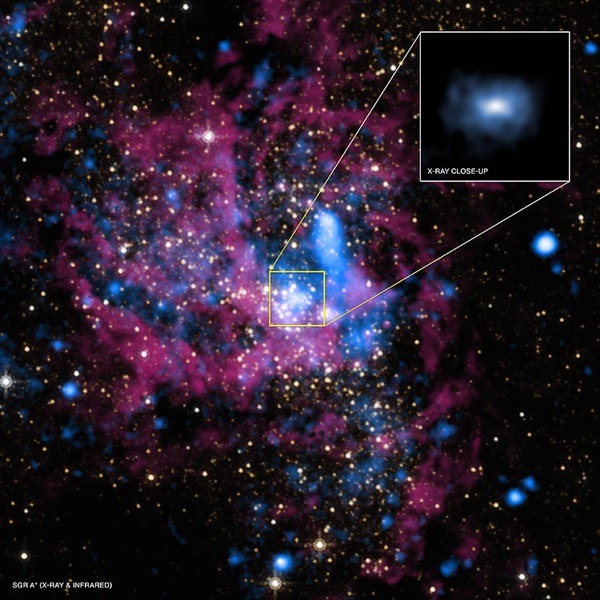-
A tool bag is floating around in Earth’s orbit. Here’s why
Tool bag doesn’t pose a threat to the International Space Station, NASA says Looking into the night sky can be breathtaking and awe-inspiring. There are shooting stars, galaxies being born, solar and lunar eclipses and so many other dazzling cosmic phenomena. Oh, and then there’s a bag of tools. That’s right, since Nov. 1, a tool…
-
Mysterious blasts of radiation might stem from our universe’s most extreme stars
New research has revealed that different types of neutron stars, born when massive stars die, behave in a similar way. This might sound like a minor result, but in the grand scheme of things, it’s a finding that further supports the idea that these extreme dead stars — so dense a tablespoon of one equals…
-
Mysterious blasts of radiation might stem from our universe’s most extreme stars
New research has revealed that different types of neutron stars, born when massive stars die, behave in a similar way. This might sound like a minor result, but in the grand scheme of things, it’s a finding that further supports the idea that these extreme dead stars — so dense a tablespoon of one equals…
-
SwRI-led PUNCH mission advances toward 2025 launch
image: On November 17, 2023, the Polarimeter to UNify the Corona and Heliosphere (PUNCH) mission achieved an important milestone, passing its internal system integration review, clearing the mission to start integrating the four observatories. Three of the four PUNCH spacecraft will include SwRI-developed Wide Field Imagers (pictured) optimized to image the solar wind. The dark…
-
SwRI-led PUNCH mission advances toward 2025 launch
image: On November 17, 2023, the Polarimeter to UNify the Corona and Heliosphere (PUNCH) mission achieved an important milestone, passing its internal system integration review, clearing the mission to start integrating the four observatories. Three of the four PUNCH spacecraft will include SwRI-developed Wide Field Imagers (pictured) optimized to image the solar wind. The dark…
-
4 of the weirdest objects in space

An image of the area surrounding Sagittarius A*, the supermassive black hole at the center of the Milky Way galaxy, in X-ray and infrared light. X-ray: NASA/UMass/D.Wang et al.; IR: NASA/STScI The universe is filled with bizarre objects. Then again, Earth is all we know. So what may seem wild and exotic to us is…
-
4 of the weirdest objects in space

An image of the area surrounding Sagittarius A*, the supermassive black hole at the center of the Milky Way galaxy, in X-ray and infrared light. X-ray: NASA/UMass/D.Wang et al.; IR: NASA/STScI The universe is filled with bizarre objects. Then again, Earth is all we know. So what may seem wild and exotic to us is…
-
Using the world’s three most powerful particle accelerators to reveal the space-time geometry of quark matter
A montage of reconstructed tracks from actual collision events and photographs of the respective detectors, at the Brookhaven National Laboratory and at CERN. Credit: Montage made by Máté Csanád / Eötvös Loránd University. Original photos for the montage: STAR és PHENIX: Brookhaven National Laboratory and CMS és NA61: CERN Physicists from the Eötvös Loránd University…
-
Scientists chart the stories of young stars — from being born to moving out
Scientists are building a better account of the lives of adolescent stars, starting from their births in collapsing clouds of cosmic gas and dust to the time they “fly the nest” and drift away from other young stars in their original clusters. Studying these stellar timelines will help scientists better determine the ages of stars…
-
Redefining Astronomy With Tech: Investigating the Christmas Tree Galaxy Cluster – Innovation & Tech Today
Credit: Sam O’Keefe/University of Missouri A team of international scientists, led by the University of Missouri’s Dr. Haojing Yan, used NASA’s James Webb Space Telescope (JWST) to uncover 14 new transient objects within the Christmas Tree Galaxy Cluster, 4.3 billion light years away. These transients, which appear as flickering lights in space, were recognized through…